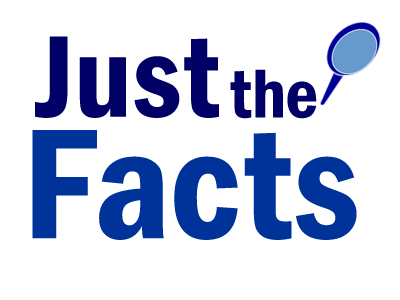September 2014: MCSI September Bulletin:
August ended with another round of severe storms which pummeled many communities and caused local flooding. On August 21, some areas of Winnipeg (Lindenwoods, Tuxedo, and southeast Charleswood), Sanford, and Brunkild had nearly three inches of rain in half an hour. On August 29, two inches of rain in fell in 20 minutes in Steinbach and four inches of rain landed in Niverville over a few hours. In the early hours of August 30, it was 4 C and no insects were in the air in the St. Adolphe area. Frequent, heavy rains and cold temperatures were not ideal conditions to keep migratory chimney swifts lingering in Manitoba.
Not surprisingly, chimney swift numbers dwindled by the end of August as migration continued. At the Assiniboine School roost, David, Adolf, and Peter hoped to see a “September” swift and their diligent monitoring efforts were rewarded, on September 1, by the sighting of 2-3 birds. However, no chimney swifts roosted at the school that night.
The last two Selkirk monitoring reports of the season were interesting reflections of migration. On August 25, Alyssa, Andy, Carol, Gerald, Linda, Ralph, Robert, Ruby, and Virginia noted 29 roosting chimney swifts divided between 3 of 4 monitored sites. On September 1 (the last regular Monday monitoring night of the season), only 1 roosting chimney swift was counted at the Red Brick chimney, although a group of 8 was seen near the Large Chimney.
Enjoyable opportunistic sightings of late August chimney swifts, also seen in low numbers, were reported by Matt in Carman and Rudolf in East Kildonan, Winnipeg. On September 2, Gerald saw a group of at least 10 chimney swifts over the Home Hardware store in Selkirk.
With Gerald’s September 2nd observations, and subsequent fast-acting sleuthing, came the exciting discovery of a second new site being used in Selkirk this year. Gerald tracked the swifts to another new chimney near the Selkirk hospital. It is significant to have the number of known occupied sites in the community increase from four to six in one year – great work Selkirk Swifters!
Also, a new nest site was reported in the East Kildonan area of Winnipeg by Rudolf. So, the total number of new sites identified to MCSI this year = 7!
Margaret and Millie had the distinction of closing out the 2014 season with their observations in Brandon. Five roosting birds were seen on September 7 at the Orange Block chimney. Then, the final reported chimney swift entered the same site roost on September 10. Thanks for your season long efforts and long season of monitoring ladies! The challenge is on as to who sees the first chimney swift in the spring of 2015…
Some news from Saint Adoplhe
With the departure of chimney swifts from their summer range, comes a fall task for me. I look into the cleanout traps of two St. Adolphe nest sites to observe evidence of nesting. Then I estimate breeding success. At the Main St. site, which was abandoned during the daytime in July, a clutch of 6 eggs was laid (12 half egg shells were present). Six small carcasses were seen at the bottom of the cleanout trap; no nest was observed. It appears that all the hatchlings died at 1-2 days of age. At the Brodeur Bros. site, all 4 eggs in the clutch hatched but unfortunately, 3 juveniles died before fledging – 1 at ~5 days of age and 2 at ~ 15 days of age; 1 juvenile made it out of the top of the chimney successfully. What happens to cause pre-fledging mortality? Sometimes nestlings fall out of the nest, sometimes food availability is so low (think of those long, rainy days) that starvation ensues, and rarely, hostile activities take place where non-parental adults enter the nest site and disturb the peace. Other unknown factors may play a role too.
The other three nest sites in St. Adolphe do not have accessible chimney cleanout traps so behaviour observations have to be relied on to estimate fledging success. The Church nesting attempt failed in July when the adults abandoned the chimney during the daytime. The SE Club Amical nesting pair also stopped their first attempt in July, then became sporadic users of the chimney again during the daytime – ultimately the nesting attempts were not successful. However, the NE Club Amical chimney swifts fledged 2 juveniles around August 11.
Overall, the 5 known nest sites in St. Adolphe were active; 3 primary nesting attempts failed; 2 nesting attempts were successful; and an estimated 3 fledglings were produced. Such low productivity is one factor to be considered in the assessment of declining populations of chimney swifts in Manitoba.
With the support provided by our legion of volunteer monitors, we have concluded the 2014 monitoring season in Manitoba by contributing to the Four Night National Roost Site Monitoring Program, the Manitoba Breeding Bird Atlas, and the MCSI roost/nest site database. Over the summer, another group of dedicated volunteers worked behind the scenes for the betterment of chimney swifts in Manitoba.
The MCSI Steering Committee is a collective of people devoted to the stewardship and conservancy of chimney swifts in Manitoba. We develop and manage the MCSI monitoring, research, and outreach programs. We will continue to strive toward creating greater public awareness of this Threatened Species At Risk and developing education material.
The Steering Committee members represent a diverse group – self-employed and retired individuals; employees of the provincial and federal governments, and non-government organizations; biologists, some specializing in species at risk, and research scientists; master birders and dedicated backyard birders etc. Our common denominator, however, is chimney swifts and issues related to the betterment of their populations in Manitoba. Together, our group can accomplish what an individual would not be able to. For example, we currently are preparing a habitat loss and mitigation policy for use in situations where deconstruction of known chimney swift sites may take place; it will also be a useful resource for building new chimney swift habitat in Manitoba.
Our efforts through the fall of 2014 and winter of 2015 will be aided by much appreciated financial support from Environment Canada’s Environmental Damages Fund (EDF). Now we need your continued assistance. The number one task over the next few months is to identify chimney sites – roost or nest – that could be reopened or repaired (using our funds) for chimney swift occupancy. Send your suggestions for site remediation along to us! We hope to staff a coordinator (paid for by EDF) for this work soon.
So on behalf of the other Steering Committee members ~ Christian Artuso, Ron Bazin, Neil Butchard, Lewis Cocks, Ken DeSmet, Nicole Firlotte, and Rob Stewart ~ I would like to send a loud shout-out of THANKS for making 2014 such an accomplished year! We will stay in touch, with the able assistance of webmaster Frank Machovec, and hope to count you in for the 2015 chimney swift monitoring season.
For your viewing pleasure…
If you need to Dream a Little Dream of Chimney Swifts over the “off season” … click on the following link to view a video taken on Tuesday, June 3, 2014 at the Assiniboine School roost chimney. Thanks to Ron Bazin for shooting the original footage, David Wiebe for his editing efforts, and Rob Stewart who methodically counted the 101 chimney swifts who dropped in for the night…
Check the video on YouTube at http://youtu.be/ff065TB8Y7s
All the best ’til next time, Barb.














